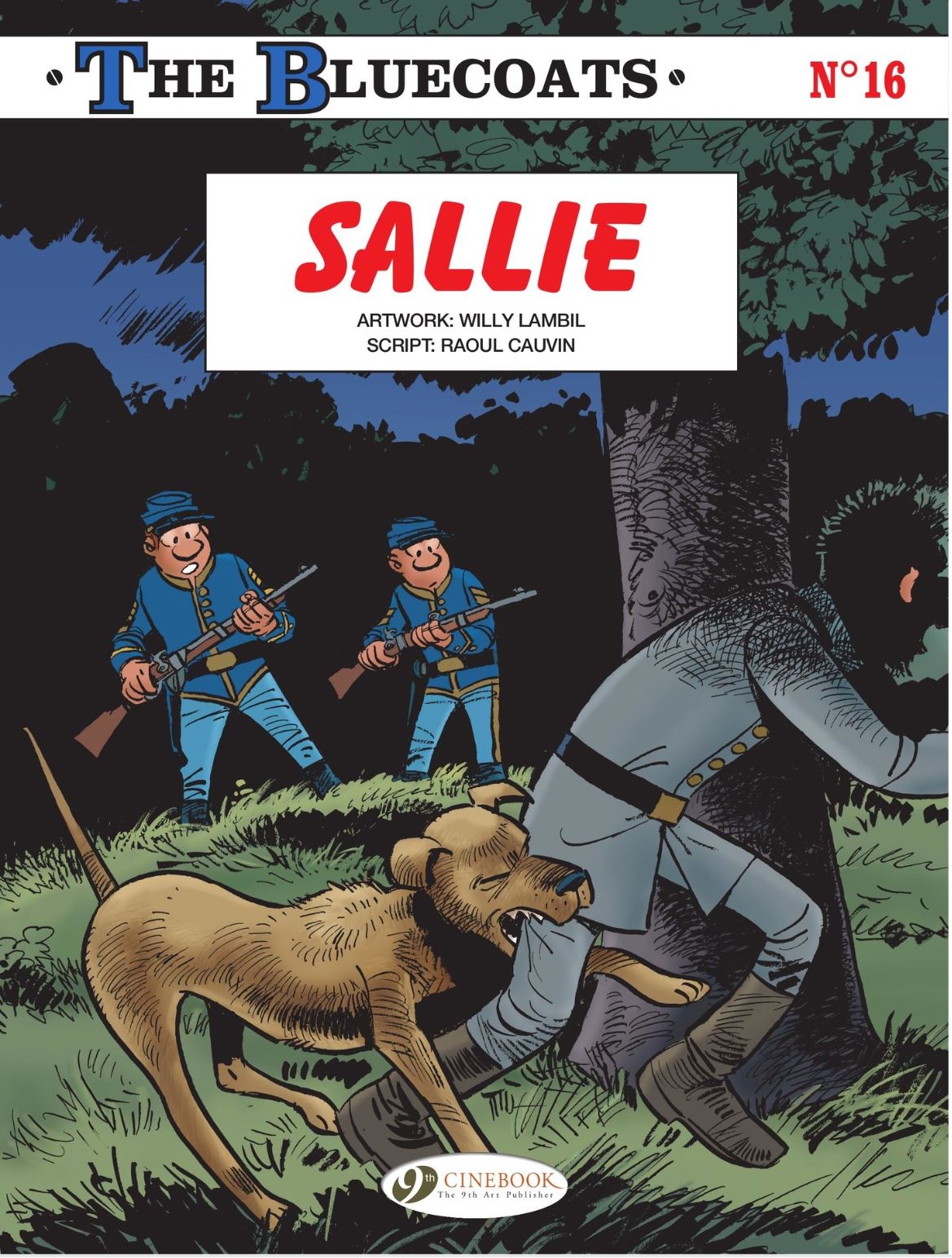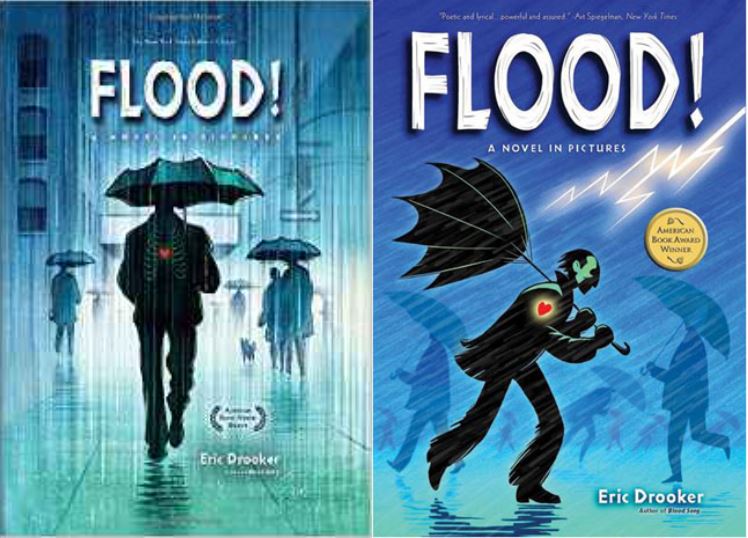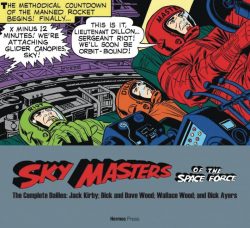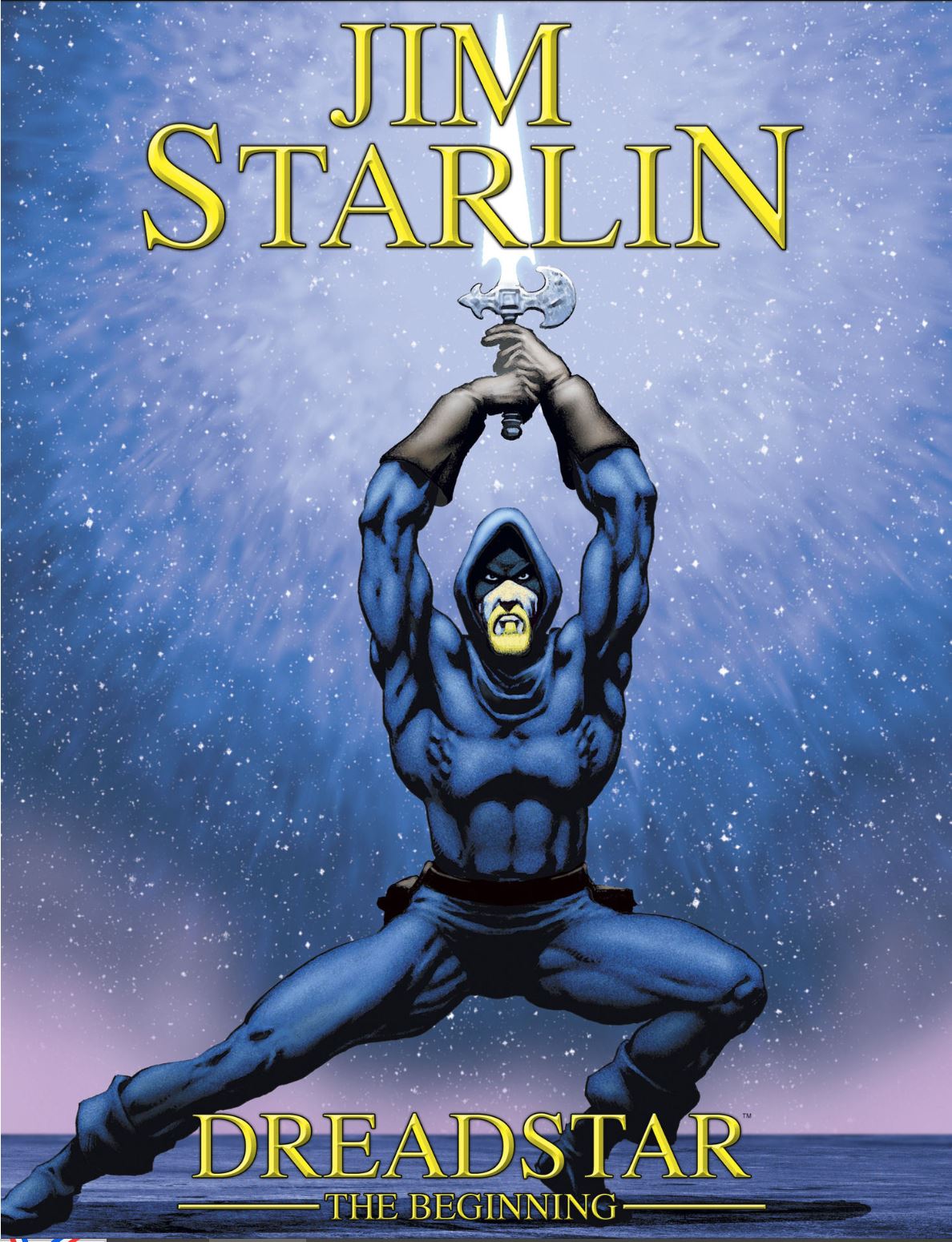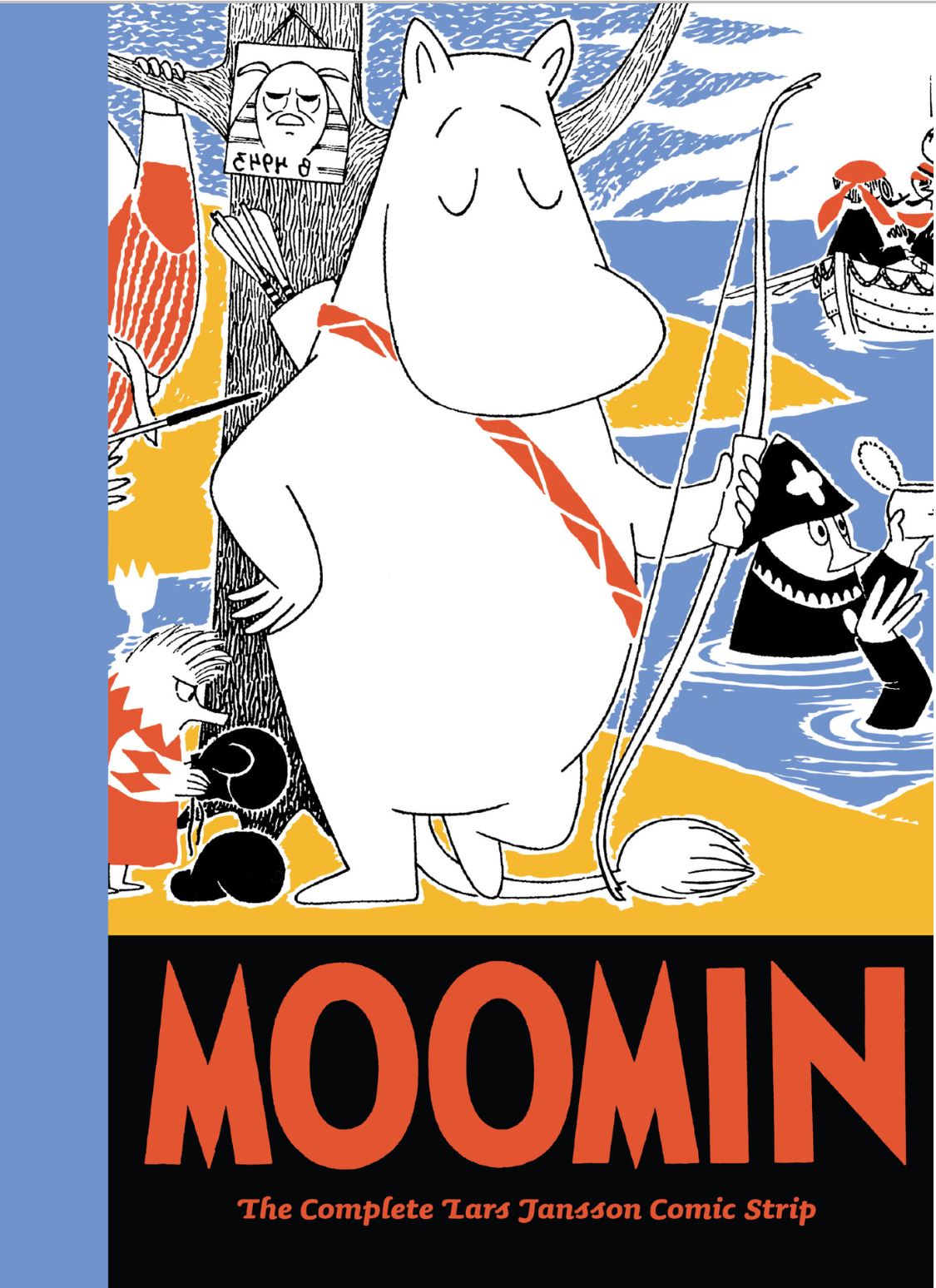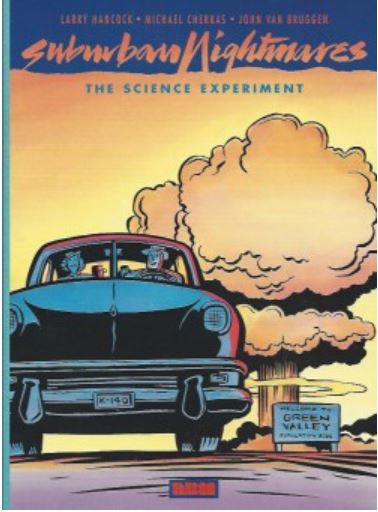
By Larry Hancock, Michael Cherkas, John Van Bruggen & various (NBM)
ISBN: 978-0-91834-880-7 (Album PB)
Anticipating the imminent release – and upcoming review of Michael Cherkas’ Red Harvest – I thought I’d put in a plug/request for another of the stunningly different comics he and his creative partners pioneered in the antediluvian 80s and neurotically self-absorbed 90s. Here you go…
During the vast expansion of opportunity and outpouring of innovation that graced comics during the 1980s, much of the “brain-rotting trash” or “silly kid’s stuff” stigma that had plagued the medium was finally dispelled. America started catching up to the rest of the world: acknowledging sequential narrative as an actual Capital “A” Art Form, and their doors opened wide open for foreigners to make a few waves too…
One of the era’s most critically acclaimed and inescapably intoxicating features sprang from semi-Canadian Renegade Press which set up shop in the USA at the start of the black & white comics bubble in 1984. They quickly established a reputation for excellence, offering a strong line of creator-based properties including some genuinely remarkable series such as Ms. Tree, Journey: The Adventures of Wolverine MacAlistaire, Flaming Carrot, Normalman, and a compulsively backwards-looking Cold War/UFO/paranoia-driven delight: The Silent Invasion.
That last was a stunningly stylish conspiracy saga, bolting 1950s domestic terrors (invasion by Reds; invasion by aliens; invasion by new ideas…) onto Film Noir chic: and employing 20-20 hindsight to produce phenomenally fresh, enticing delights for the so-similar Reagan era. From here and now, it’s never seemed more distressingly likely that politics, if not all history, is cursed to repeat certain cycles and strategies…
The series was collected in four monochrome tomes, re-presenting the lead story wherein inspired co-creators Michael Cherkas & Larry Hancock concocted a cunning confection combining all the coolest genre elements of classic cult sci-fi, horror, spy, conspiracy theory, crime, romance and even situation comedies…
Of equal if not greater interest (to me at least) were the ancillary back-up tales utilising the same milieu and themes. These proved popular enough to springboard into their own short-lived title and ultimately two collections of their own…
Recently, just as the world teetered even further and faster on the edge of a multiple-choice test of imminent dooms – and with America once more enduring internecine struggle amongst the citizenry, corruption, cover-ups at every level of government and the press under attack from the people and traditions it seeks to inform and safeguard – The Silent Invasion was remastered, revised, re-released and continued in a quartet of so-collectible tomes…
1950s America was a hugely iconic and paradoxical time. Incomparable scientific and cultural advancements, great wealth and desperate, intoxicating optimism inexplicably arose amidst an atmosphere of immense social, cultural, racial, sexual and political repression with an increasingly paranoid populace seeing conspiracy and subversive attacks in every shadow and corner of the rest of the world.
Such an insular melting pot couldn’t help but be fertile soil for imaginative outsiders to craft incisive, evocative tales dripping with convoluted mystery and taut tension, especially when wedded to the nation’s fantastic – and ongoing – obsessions with rogue science, flying saucers, gangsterism and conspiracies…
They were also ridiculously obsessed with hot babes and bust sizes, but that’s not really a mystery, is it?
In 1983 the temptation for a little mischief was clearly too much for the USA’s less panicky northern neighbours, and Larry Hancock, Michael Cherkas & John Van Bruggen brilliantly mined the era for these stunning, stylish and clever yarns, subsequently pulling off the impossible trick of re-capturing a fleeting zeitgeist…
This first superbly oversized and inexplicably out-of-print monochrome tome (a whopping 280 x 205mm) gathers that stand-alone support material from The Silent Invasion and Suburban Nightmares comic books. Hancock, Cherkas & Van Bruggen playfully swap jobs and – with a few invited guests – pilfer and homage other stylisations and forms to produce a wicked wealth of twisted tales and shocking stories that will, even now, astound fans of classic genres cited above…
The macabre, mirth, mood and menace commences with eponymous 4-part thriller ‘The Science Experiment’ (script by Hancock, pencils Van Bruggen, inks & letters from Cherkas) set in the early 1950s boom years, wherein an idyllic new town built on the edge of an operational government atomic bomb testing site slowly reveals its terrible secret…
In ‘Welcome to Green Valley’, the latest ultra-modern planned community in Nevada accepts new school science teacher Sam Donaldson and his wife Ruth with open arms. They’re the perfect nuclear family, with son Rusty already making friends at Hoover High and another baby on the way. Soon, they’re all getting on famously with everybody – or at least the adults are…
However, soon after flirtatious neighbour Theresa Morrow confides to Ruth that she’s also expecting, the poor thing has a minor fall. When the concerned Donaldsons warn the doctor, they receive the tragic but impossible news that Theresa has inexplicably died… and was “never pregnant”…
In the shadow of a fresh mushroom cloud, ‘An Ill Wind blows in Green Valley’ finds bereft Barry Morrow turning to drink whilst Sam meets Hospital Administrator Dr. Stewart Carver: a keen fan and follower of the regular nuclear spectacle occurring 50 miles beyond his office window…
Still unsettled, Sam heads for the local library and checks out some books about radiation, unaware that by doing so he’s made it onto a very special secret list…
His concern increases after inadvertently learning his predecessor at Hoover High consulted the same tomes before mysteriously quitting and disappearing, but it’s Principal Daniels who panics when Donaldson finds that some of old Charlie Simmer’s notes and journals are languishing at school secretary Madge’s house…
Too busy and wrapped up to help Rusty with his science project, Sam goes to Madge’s house only to find she’s been burgled. Although the place has been ransacked, all that’s missing are Simmer’s journals, but before he can process it all, Barry attacks him, accusing Donaldson of having an affair with Theresa…
‘Dark Secrets of Green Valley’ sees Sam barracked by Principal Daniels, another atomic apologist who can’t contemplate any thought that radioactive fallout might be harmful. As Ruth has an ante-natal check-up, Carver confronts Sam, accusing him of scaremongering, and confides that the hospital has been running a government-sponsored survey into radiation. For years.
And has decreed atomic tests as categorically harmless…
Sam is unconvinced, especially as he has noticed how few young kids live in the bustling town. Obsessing over the fact that the Hospital’s huge maternity unit has only one baby in it, he leaves with Ruth, but all such thoughts are driven from him when Barry tries to run them down in the parking lot…
Horrific answers come in the shocking conclusion when now rational and repentant Barry meets Sam: explaining his own part in a shocking conspiracy to cover up what radiation does to foetuses and the outrageous, draconian steps taken by a panicking government desperate not to lose face… especially after spending so much building their City of Tomorrow…
The mysteriously low conception rate is explained at last, but when Sam points out how Barry is still deluding himself and underestimating the lengths Carver has gone to, ‘The Fate of Green Valley’ inevitably culminates in a welter of blood and death…
After the compelling tension and trauma of the title tale, ‘Be Home Before it gets Dark!’ (scripted by Hancock and printed from Van Bruggen’s unlinked pencils) switches tone if not time-period. Here a little lad desperate to prove his bravery stays out late with the big kids and learns that sometimes there really are monsters in the night…
‘Buster Takes a Nap’ describes problems occurring when a provident, prudent and friendly family promise too many friends and neighbours a place in their brand-new bomb shelter. Of course, they’ll never really have to honour those pledges, will they?
With Cherkas tackling all the art chores, ‘The Inheritance’ recounts a little lad’s tale of the scary man next door. We all know about those grouches: shouting, cursing, destroying kid’s toys and digging the gardens in the middle of the night, but this one is REALLY mean. Perhaps that’s why so many kids run away from home and are never seen again?
Stanley Morrison was ‘Just another Joe’ (script by Hancock, pencils Van Bruggen, inks Cherkas): a decent, loyal American in suburban Apple Hill who sold insurance and spent his spare time denouncing colleagues and neighbours to the FBI for un-American activities. Surely it’s just coincidence that they all happen to be more successful or popular than him? Of course, a guy like that is really hard to live with, but his abused, long-suffering wife is a decent, loyal American too…
Veteran inker Bob Smith joined Van Bruggen & Hancock for the paranoid tribute to the earth-shattering advent of Rock ‘n’ Roll as Mrs. Ellen Nelson ruminates on why her son is acting so weird. What makes him hide in his room for hours at a time? Might it be Martian abduction, atomic mutation, government meddling, commie mind-manipulation or something even worse ‘For all we Know’?
Bob Nevin always took the 7:13 train to his job in the city but his tidy, happy life began to instantly and inexplicably unravel the day he caught ‘The Seven-Thirty-Three’ – a surreal and chilling homage to The Twilight Zone, pencilled by Cherkas & inked by Van Bruggen, whilst edgily sardonic ‘Suburban Blight’ sees the illustrators trading places to recount all-out war between a man and the dandelions that desecrate his otherwise perfect lawn…
This superbly incisive and trenchant initial collection concludes with Hancock & Cherkas’ fantasy ‘June 1953’, wherein diligent, hard-working Larry Hillman doesn’t come home one night. When he turns up a day later, Larry is a changed man. Inexplicably happy, calm and friendly, he quits his job, ignores all responsibilities and begs his family to come with him when the aliens who abducted him return in a month to take them all to the perfect world of Alpha Centauri…
Crafted in a boldly adventurous range of visual styles and long overdue for revival, these beguiling and enthralling Suburban Nightmares (and the follow-up from 1996) comprise a sublimely witty gateway to an eerily familiar yet comfortably exotic era: one no fan of thriller fiction can afford to ignore.
Suburban Nightmares: The Science Experiment © 1990 Michael Cherkas, Larry Hancock and John van Bruggen. Other stories © 1986, 1987, 1988 Michael Cherkas, Larry Hancock and John van Bruggen. All rights reserved. NBM Publishing.



